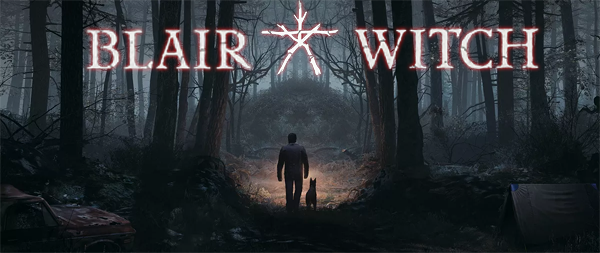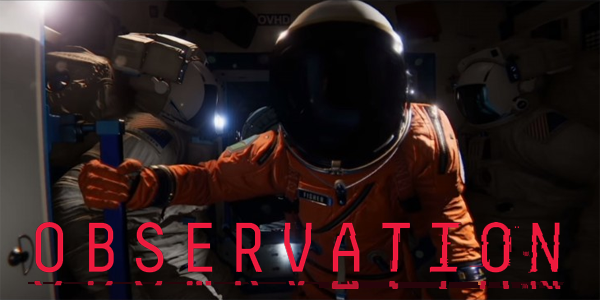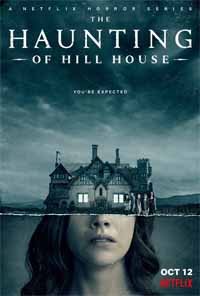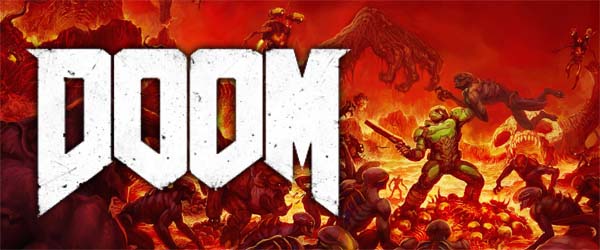
Blair Witch, as an intellectual property, is in a frustrating place similar to the Alien franchise. Both were innovative horror films that set numerous standards and conventions within their sub-genres, and which have been copied and ripped-off numerous times. Sci-fi games from Starcraft, to Metroid, to System Shock, to Dead Space have all taken heavy inspiration from Alien and Aliens. So much of the iconography of Alien and Aliens have been borrowed by these games, that when someone comes along with a game based on the Alien intellectual property, it's hard for that game to not feel like it's derivative of one (or all) of the myriad Alien impersonators.
the Blair Witch Project has similarly left a mark on the horror landscape. It single-handedly popularized the "found-footage" genre against the backdrop of a creepy, supernatural forest. Games such as Outlast, Alan Wake, and even Resident Evil VII all have a little bit of Blair Witch in their DNA. So when a game comes out that actually bears the "Blair Witch" name, it's kind of hard for it to stand out in the larger horror landscape.
Plenty of games (such as Outlast [LEFT]) have used tropes inspired by The Blair Witch Project.
This is the case with Lionsgate and Bloober Team's new Blair Witch game, exclusive to Microsoft platforms. Nothing that Blair Witch does feels particularly new or creative, even though most of the game's ideas are competently executed. Using a camcorder as a tool for navigation, exposition-delivery, and puzzle-solving feels pulled straight from Outlast or Resident Evil VII. Wandering through the woods and defeating monsters by pointing a flashlight at them gives me flashbacks to Alan Wake. Navigating the forest and occasionally picking up other people's trash also reminded me of Firewatch. Eventually, the whole game descends (rather predictably) into P.T. territory -- but, you know, without all the nuance or careful pacing that made P.T. so unnerving.
Who's a good doggy?
Blair Witch's most innovative feature is probably the dog companion (named Bullet), but even that feels pulled straight from Fallout 4. I probably would have been a bit more impressed if not for the fact that Bullet seemed to lose relevance as anything other than a monster compass, for a large chunk of the middle of the game. Without having healing items or ammunition or any other consumable supplies, the ability to send the dog out to find things feels like a sorely under-utilized mechanic.
Bullet is very well-introduced, and is integral to the early levels of the game. He finds clues for you, fetches key items, guides you to the next objective, and warns you of potential danger, all completely organically and without breaking immersion. But after a couple of hours, he just runs out of things to find and things to do. The puzzle shift away from using the dog, and more towards using the camera to do everything from manipulate the environment, to navigate mazes and looping paths, and even spotting monsters.
Your emotional support dog, Bullet, serves an integral role throughout the game.
... [More]
7a3b2c59-d35b-424f-a1cd-ecf04d6332bb|1|5.0
Tags:Blair Witch, Bloober Team, Lionsgate Games, The Blair Witch Project, Microsoft, XBox, windows, XBox Live, Steam, Good ol' Games, indie gaming, horror, found-footage, camera, forest, post-traumatic stress disorder, dog

It's real refreshing to come across a science fiction game that isn't just about shooting aliens with laser guns or blowing up space ships. If you're in the market for a thoughtful, well-presented science fiction experience, then I highly recommend that you check out Observation. If you're also into horror, then even better, because this game definitely has some horror elements as well. They're much more subdued, but this game does do a fantastic job of creating a building sense of tension and intrigue as its over-arching mystery is slowly unfurled.
The gimmick here is that you play as a malfunctioning artificial intelligence on a near-future orbital research station. The game is presented as a sort-of found-footage narrative (think along the lines of the Apollo 18 horror movie) told entirely from the point of view of the on-board A.I. Something goes wrong, the crew are all missing and possibly dead, and you help the sole survivor try to find the remaining crew and piece together what happened to the station. Think along the lines of playing as the HAL 9000 from 2001: A Space Odyssey, or as Kevin Spacey's character in the [fantastic] movie Moon. You do this by jumping between different surveillance cameras (a la Five Nights at Freddy's, but, you know, with ambitions of being more than just a random jump-scare-generator). Through the cameras, you interact with various technology and station systems within your line of sight. You'll occasionally be asked questions or given commands by the surviving astronaut, and you chose how to respond.
You are an unreliable A.I.?
From the start, there's a certain degree of unreliable narrator going on. One of the very first actions that the game asks you to do is verify the identify of the surviving astronaut via her voice print. You are initially told that her voice print does not match, and you're given the option to accept or reject her voice print. If you reject, she'll repeat her authorization code, and you'll be told that it matches this time. Is she not who she seems? Are your own systems providing you with misleading information? Are your systems merely damaged? This creates an immediate sense of distrust. You (the player) don't necessarily trust the survivor, the survivor doesn't necessarily trust you, and you can't even trust your own perception and judgement.
From the start, it's unclear whether you can trust Emma, or whether she can trust you...
This immediately creates a dense atmosphere of intrigue and mystery and sets a level of tension that persists through the entire game.
This atmosphere is helped by the richly-detailed near-future space station that you inhabit. The visuals are immaculately detailed, and the station looks and feels like it could be modeled after the real-life International Space Station. The spaces are tight and claustrophobic. Accessories and stationary are strapped or velcroed to the walls, floors, ceiling, and desk surfaces in order to prevent them from floating off in the zero-gravity environment. Everything is believable.
The game further builds its atmosphere with its immersive U.I.. Every button press, command, and interaction has some in-universe context behind it that helps to keep you in the mind-space of your A.I. character. The U.I. is mostly easy to use, and most actions feel intuitive.
This game hooked me in with its setting and atmosphere, and I just had to keep playing to find out what happened and where this would go!
The space station and U.I. are believable and immersive.
... [More]
409df8bf-36a0-4560-ac9f-e173dd9fc208|0|.0
Tags:Observation, No Code, Devolver Digital, PSN, Epic Games Store, science fiction, horror, mystery, point-and-click, walking simulator, puzzle, indie gaming, camera, found-footage, unreliable narrator, space, astronaut, artificial intelligence, HAL 9000, 2001: a Space Odyssey, Five Nights at Freddy's, Saturn

Oh boy, this is going to be a tough one to talk about. I have very mixed, and somewhat polarized views of how this turns out, and as such, I'm struggling with whether or not I can offer a recommendation. The first five or six episodes are fantastic! After that, however, I really feel like the show peters out, begins to meander and run in place, and then kind of unravels in the end. Those first five or six episodes are so good, however, that I think I can recommend the series as a whole based on the strengths of its first half.
I can't discuss this show without getting into spoilers, so be warned that the further down you read, the more spoiler-y this will become.
A masterfully suspenseful start
Each of the first five or six episodes is told from the point of view of a different sibling in a family that is tormented by a summer spent in a haunted house. This structure creates a deeply textured and nuanced tapestry, in which each episodes recasts the events of the previous episodes in a new light. Giving each character his or her own episode provides us with a rich character study that helps us to understand each character's attitude when they all get together and the family drama gets rolling. All the while, the subtle supernatural elements create a building sense of intrigue as the mysteries surrounding Hill House, and the family's last night there, continue to mount and the plot continues to thicken.
Each of the first six episodes is told from the perspective of a different character.
I really love the camera work! Slow pans and zooms are used with excellent effect to draw out scenes and add tension and keep the scene mysterious. Sometimes, there's a creepy detail in the background. Other times, there's an ominous lack of anything creepy to see as the camera slowly pans from character to character across a room or down a hallway. In any genre other than horror, these labored camera movements would seem wasteful and pointless, but they really add to the atmosphere here.
The set design is also really great. The gothic Hill House provides an excellent and ominous set piece, but the other sets are also uncanny and unnerving in their own right, especially Shirley's funeral home. Around episode 6 or 7, I was really starting to struggle with reconciling the geometry of Hill House, and this is something that is paid off really well at the end of the series.
The geometry of Hill House becomes a source of unease as the series develops.
A meandering, incoherent ending
Unfortunately, the series faltered a bit for me after the sixth episode. At this point, all the characters are together in one place, and so no one character receives the focus of the narrative. The story starts to meander a bit here, while also running in place, as the intrigue that was so carefully crafted in the preceding episodes is squandered, new plot points and concepts are thrown at the audience, and old plot points and concepts just disappear.
... [More]

I never played the original Doom. I didn't get into PC gaming until the mid twenty-aughts, and even then didn't play much in the way of first person shooters that weren't the first two Call of Duty games. I was always more into SimCity and Civilization. So I was in no rush to play 2016's reboot of Doom, nor can I really look at it from the perspective of how it holds up against the original's legacy. I heard a lot of good things about it, and picked it up on this year's Steam summer sale.
Bethesda recently announced a sequel, so I thought I'd check this one out to find out if I should be excited.
I miss the good ol' days of game demos being available before a game releases.
I actually did play the free demo on the PSN months ago, which was an option for me because the game's been out for two years already (does this count as a retro review?). I miss the days when free demos were available before a game's release, so we could try it before we buy it. Sigh. Anyway, I had a lot of trouble with hitting enemies with a PS4 controller considering how fast and movement-oriented the combat is, but I definitely saw the potential enjoyment that I could have with the finer control of a mouse. So I went ahead with the Steam purchase.
Punch a demon in the face
Doom breaks from the cover-based mold set by most recent big budget first-person shooters by encouraging very fast, very frenetic, very aggressive, and very in-your-face action in a fashion similar to Bloodborne. Staggering an enemy allows you to perform a melee "Glory Kill" that provides you with a shower of health pick-ups and ammo. When your health is critical, the best course of action usually isn't to run away and take cover (like in so many modern cover-based shooters); rather, the ideal strategy is often to find the biggest, meanest demon, shotgun it in the face, and then rip its head off with your own bare hands. This keeps the player in the action, and mostly removes the need to backtrack through a level to find health kits and powerups. It's not quite as tactical or thoughtful as the dismemberment system from Dead Space, and some might argue that it's derivative of the chainsaw from Gears of War, but it does help to create a definite flow to the combat that helps it to stand out from other shooters of the era.
Charging an enemy is often the best way to restore your health.
The default move speed is faster than the sprint of most other modern shooter games. You can press 'Shift' to toggle a "walk" mode, but I honestly don't know why you would ever want to, and I never once used it after experimenting with the controls at the start of the game. Most enemies also charge at you with melee attacks or have actual projectile attacks (as opposed to hit-scan weapons). You don't avoid damage by ducking behind cover; instead, you can usually just side-step an incoming projectile or attack. Again, because of the fast speed of the character, the term "side-step" isn't really apt; it's more like a "side-sprint".
This all creates a very retro feel that [I assume] faithfully captures the spirit and fluidity of the original game's combat. It's an experience more akin to a first-person bullet hell game rather than the cover-based, whack-a-mole shooting galleries that define most modern shooters. [More]
2028a05f-7ac8-4aa6-83e8-785b11e76705|0|.0
Tags:Doom, Id Software, shooter, first person shooter, Hell, demons, occult, Mars, science fiction, horror, action

I missed yet another theatrical sci-fi movie. The trailers for Annihilation made the movie look like kind of a dumb monster flick, so I didn't rush out to go see it. I only started to hear several weeks later that it might actually be a pretty good sci-fi film. Unfortunately, life happened, my weekends were busy, and I never made it out to the cinema to see it.
So instead, I was invited to see a new horror movie with some friends. A Quiet Place is also a monster flick, but its novel gimmick really helps to set it apart from other monster movies. The gimmick itself isn't even particularly original. Other movies have featured monsters that are especially sensitive to sound. It's the execution of A Quiet Place that sets it apart.
Much like last year's exceptional War for the Planet of the Apes, A Quiet Place's dialogue comes mostly in the form of subtitled sign language, which the family of protagonists already knows because the oldest child (Millicent Simmonds) is deaf. This leads to the movie being palpably quiet for most of its runtime. I say "most" because there's a few moments of punctuated loudness that work effectively. There's also quite a few moments in which artificially-loud noises, sound effects, and musical ques are used to create cheap jump scares.
That last bit was disappointing because when A Quiet Place is cleverly using its sound design to ratchet up tension, it works phenomenally. This comes through most clearly with the deaf daughter. The movie goes almost completely silent whenever it switches to her point of view, with a faint, high-pitched static being the only sound you'll hear. When this is combined with some depth of field effects that make it hard to see clearly what's going on, it really helps to sell the sense of powerlessness and lack of awareness of the character, which ratchets up the tension for the audience.
The daughter is deaf, so the family already knows sign language, and use it throughout the movie.
The diagetic loud noises, such as the toy space shuttle or knocking over the lamp at the beginning of the movie work really well to punctuate the silence and create momentary panic. It's when lazy, cliche horror movie sounds start to come into play that things start to feel cheap. I'm not sure whether to blame this on actor/director John Krasinski, or on producer Michael Bay. I lean towards the latter. It doesn't ruin the movie, but it does weaken it a little... [More]
6e6f5b63-528b-4196-9fa8-e2ebcbf10833|0|.0
Tags:A Quiet Place, horror, science fiction, monster, sound, sign language, silence, deaf, hearing aid, baby, children, family, pregnancy, religion, Michael Bay, John Krasinski, Millicent Simmonds, Noah Jupe
|

| 12 | | | | | | | 60 | | 11 | | | | | | | 55 | | 10 | | | | | | | 50 | | 09 | | | | | | | 45 | | 08 | | | | | | | 40 | | 07 | | | | | | | 35 | | 06 | | | | | | | 30 | | 05 | | | | | | | 25 | | 04 | | | | | | | 20 | | 03 | | | | | | | 15 | | 02 | | | | | | | 10 | | 01 | | | | | | | 05 |
|